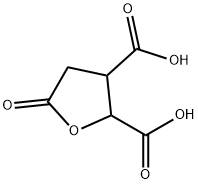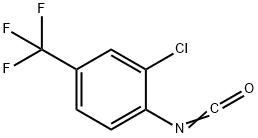Stannous octoate
Synonym(s):2-Ethylhexanoic acid tin(II) salt;Stannous 2-ethylhexanoate;Stannous octoate
- CAS NO.:301-10-0
- Empirical Formula: C16H30O4Sn
- Molecular Weight: 405.12
- MDL number: MFCD00002676
- EINECS: 206-108-6
- SAFETY DATA SHEET (SDS)
- Update Date: 2024-12-18 13:37:16

What is Stannous octoate?
Chemical properties
White or light yellowish brown paste. Soluble in petroleum ether, insoluble in water. low toxicity of Stannous octoate, oral acute poisoning data of rats LD50=3400mg/kg. acute percutaneous poisoning data of rabbits LD50>2000mg/kg.
The Uses of Stannous octoate
Stannous octoate is susceptible to hydrolysis and oxidation and cannot be used in combination polyethers (premixes). Its catalytic activity is higher than that of dibutyltin dilaurate.
Stannous octoate can be used as a catalyst for polyurethane, mainly in the production of soft block polyether type polyurethane foam, but also as a catalyst for polyurethane coatings, elastomers, room temperature curing silicone rubber, etc. As it is a divalent tin compound, it may be oxidized to tetravalent tin compound itself after foaming, and it remains in the foam body to play the role of an antioxidant, which stays in the foam after foaming and has no adverse effect on the foam performance.
The Uses of Stannous octoate
Tin(II) 2-ethylhexanoate is used as a polymerization initiator in polylactic acid production. It acts as an intermediate as well as a catalyst for urethane foams, lubricants, addition agents and stabilizers for transformer oils.
The Uses of Stannous octoate
A catalyst for polylactide polymerization.
Preparation
Stannous octoate is produced by reacting 2-ethylhexanoic acid with sodium hydroxide to form sodium 2-ethylhexanoate, which then undergoes a complex decomposition reaction with stannous chloride by heating in an inert solvent.
What are the applications of Application
Tin(II) 2-ethylhexanoate is a polymerization catalyst
Hazard
Toxic material.
Flammability and Explosibility
Non flammable
Toxicology
Stannous octoate has influence to human health. It may cause an allergic skin reaction, and serious eye damage. In addition, it is suspected of damaging fertility or the unborn child, and harmful to aquatic life with long lasting effects.
Properties of Stannous octoate
| Melting point: | <-20°C |
| Boiling point: | >200°C |
| Density | 1.251 g/mL at 25 °C(lit.) |
| vapor pressure | 0.3Pa at 20℃ |
| refractive index | n |
| Flash point: | >110°C |
| form | liquid |
| pka | 5.09[at 20 ℃] |
| Specific Gravity | 1.251 |
| color | viscous |
| Water Solubility | Miscible with water. |
| Hydrolytic Sensitivity | 7: reacts slowly with moisture/water |
| Exposure limits | ACGIH: TWA 0.1 mg/m3; STEL 0.2 mg/m3 (Skin) NIOSH: IDLH 25 mg/m3; TWA 0.1 mg/m3 |
| CAS DataBase Reference | 301-10-0(CAS DataBase Reference) |
| EPA Substance Registry System | Stannous 2-ethylhexanoate (301-10-0) |
Safety information for Stannous octoate
| Signal word | Danger |
| Pictogram(s) |
 Corrosion Corrosives GHS05  Exclamation Mark Irritant GHS07  Health Hazard GHS08 |
| GHS Hazard Statements |
H317:Sensitisation, Skin H318:Serious eye damage/eye irritation H361:Reproductive toxicity H412:Hazardous to the aquatic environment, long-term hazard |
| Precautionary Statement Codes |
P201:Obtain special instructions before use. P273:Avoid release to the environment. P280:Wear protective gloves/protective clothing/eye protection/face protection. P302+P352:IF ON SKIN: wash with plenty of soap and water. P305+P351+P338:IF IN EYES: Rinse cautiously with water for several minutes. Remove contact lenses, if present and easy to do. Continuerinsing. P308+P313:IF exposed or concerned: Get medical advice/attention. |
Computed Descriptors for Stannous octoate
| InChIKey | KSBAEPSJVUENNK-UHFFFAOYSA-L |
New Products
Tert-butyl bis(2-chloroethyl)carbamate (S)-3-Aminobutanenitrile hydrochloride N-Boc-D-alaninol N-BOC-D/L-ALANINOL N-octanoyl benzotriazole 3,4-Dibenzyloxybenzaldehyde 4-Hydrazinobenzoic acid 1,1’-CARBONYLDIIMIDAZOLE R-2-BENZYLOXY PROPIONIC ACID 4-HYDROXY BENZYL ALCOHOL 1,1’-CARBONYLDI (1,2-4 TRIAZOLE) 3-NITRO-2-METHYL ANILINE (2-Hydroxyphenyl)acetonitrile 4-Bromopyrazole 5-BROMO-2CYANO PYRIDINE 5,6-Dimethoxyindanone 5-broMo-2-chloro-N-cyclopentylpyriMidin-4-aMine 2-(Cyanocyclohexyl)acetic acid 4-methoxy-3,5-dinitropyridine 2-aminopropyl benzoate hydrochloride 1-(4-(aminomethyl)benzyl)urea hydrochloride tert-butyl 4- (ureidomethyl)benzylcarbamate diethyl 2-(2-((tertbutoxycarbonyl)amino) ethyl)malonate Ethyl-2-chloro((4-methoxyphenyl)hydrazono)acetateRelated products of tetrahydrofuran








You may like
-
 Tin(II) octanoate 98%View Details
Tin(II) octanoate 98%View Details -
 Tin(II) 2-ethylhexanoate CAS 301-10-0View Details
Tin(II) 2-ethylhexanoate CAS 301-10-0View Details
301-10-0 -
 Tin(II) 2-ethylhexanoate CAS 301-10-0View Details
Tin(II) 2-ethylhexanoate CAS 301-10-0View Details
301-10-0 -
 Tin(II) 2-ethylhexanoate CAS 301-10-0View Details
Tin(II) 2-ethylhexanoate CAS 301-10-0View Details
301-10-0 -
 Stannous octoate CAS 301-10-0View Details
Stannous octoate CAS 301-10-0View Details
301-10-0 -
 Tin(II) 2-Ethylhexanoate CAS 301-10-0View Details
Tin(II) 2-Ethylhexanoate CAS 301-10-0View Details
301-10-0 -
 Stannous octoate 98.00% CAS 301-10-0View Details
Stannous octoate 98.00% CAS 301-10-0View Details
301-10-0 -
 Tin(II) 2-ethylhexanoate CAS 301-10-0View Details
Tin(II) 2-ethylhexanoate CAS 301-10-0View Details
301-10-0